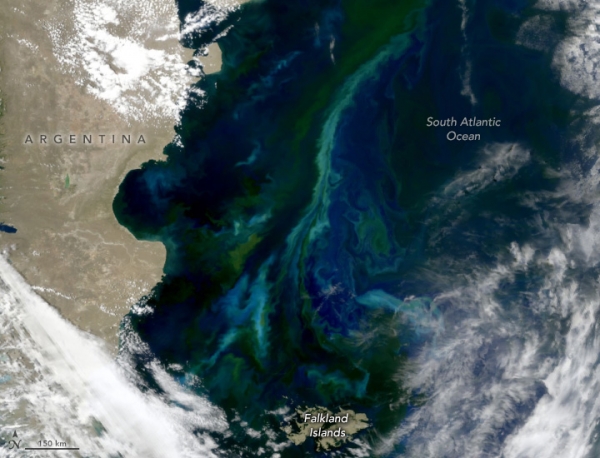In austral spring 2024, a phytoplankton bloom off the coast of Argentina painted the waters blue and green. Blooms are common in the region this time of year, but clouds often block the view from above. However, clouds stayed hundreds of kilometers offshore on November 30, 2024, allowing the OCI (Ocean Color Instrument) on NASA’s PACE (Plankton, Aerosol, Cloud, ocean Ecosystem) satellite to capture this image of the colorful bloom in the South Atlantic Ocean.
Phytoplankton are among the smallest organisms in the ocean. But when their populations explode, the blooms can span thousands of square kilometers, making them visible from space. In this scene, the bloom stretches east to west over the Patagonian Shelf and extends over 1,000 kilometers (600 miles) north from the Falkland Islands (Islas Malvinas).
Blooms in this region are stimulated by the ocean’s complex circulation patterns. For example, rising water along the Patagonian Shelf-break front carries nutrients to the surface, where phytoplankton thrive in spring and summer sunlight. Currents and eddies also stir the water horizontally, creating surface patterns that become even more visible in chlorophyll observations. Other nutrients can come from river sediment and windblown dust from Patagonia.
Photo Credit: Wanmei Liang/NASA Earth Observatory
Sci/Tech Top Stories Climate Ecosystems

